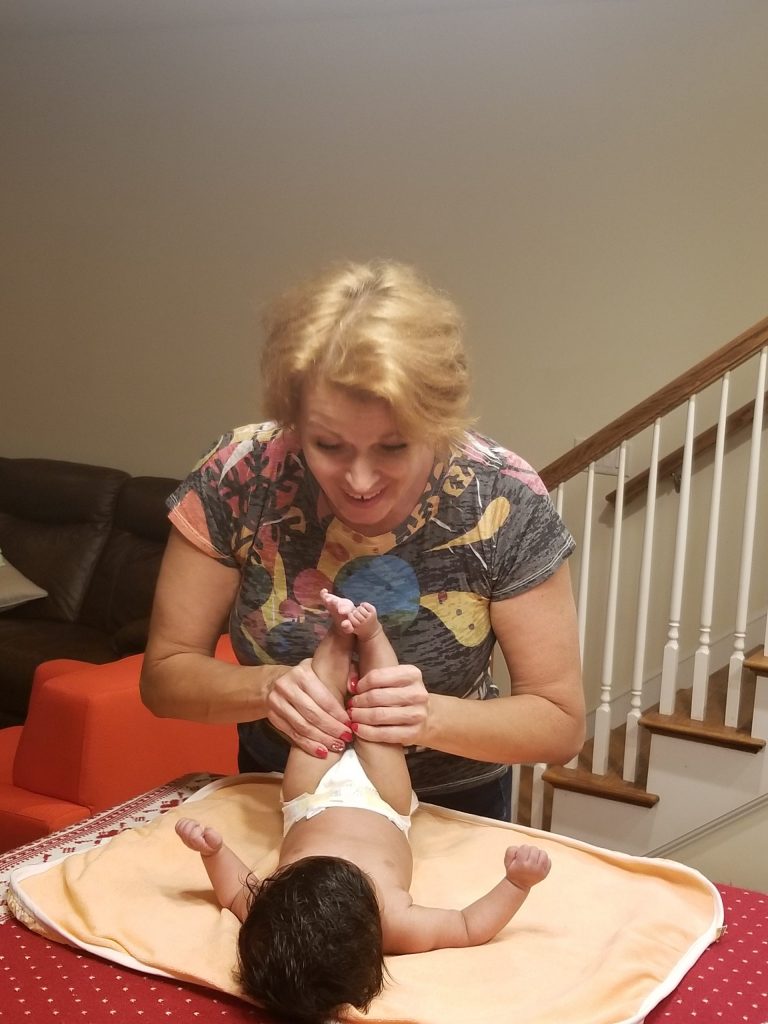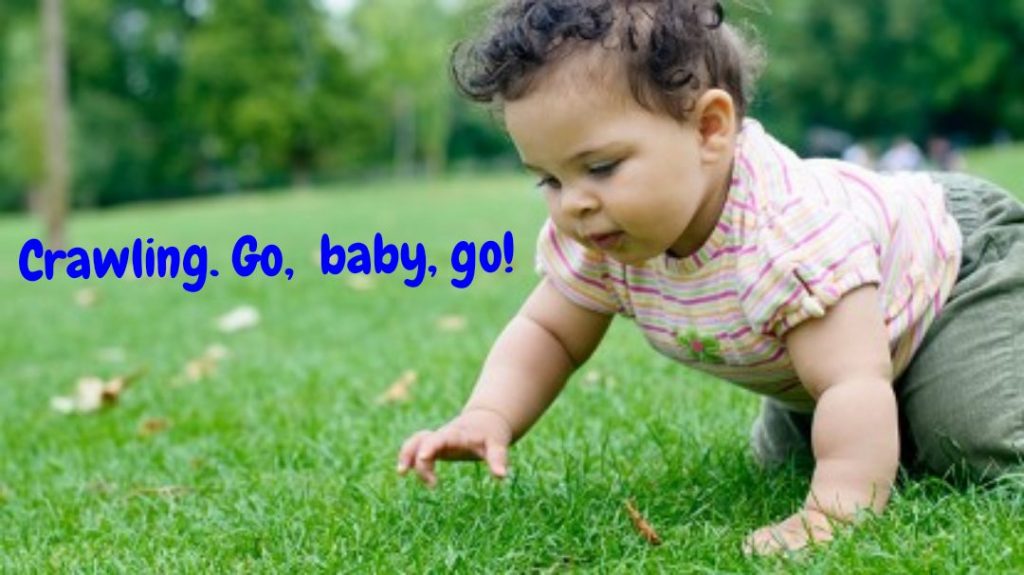How to Help Baby Crawl

Crawling may be the cutest milestone ever, and almost from birth, parents begin wondering when do babies start crawling? A belly lurch forward, a backward scramble—crawling is baby’s first attempt at moving around independently and a natural next step after rolling over and sitting upright. But when do babies crawl? Typically, babies start crawling anywhere from 6 to 10 months old, but don’t worry if your little one seems completely content staying seated for now. Some babies skip the crawling milestone altogether and go straight to standing, cruising and walking.
In the beginning, those first attempts at baby crawling may look more like boot camp drills. Crawling baby might start out by “creeping,” or dragging his belly and legs, using just his arms. Baby may also scoot his bottom along the floor, roll from point A to point B or even slide backward before moving on to traditional on-all-fours crawling. Rest assured, all of these stages of crawling are normal—not to mention adorable.

How Do Babies Learn to Crawl?
Like so many baby milestones, crawling is all about control. In order to begin crawling, baby first has to master head control, then rolling over and sitting upright. As baby checks the box on each of these milestones, he’ll naturally be ready to explore the ever-widening world around him.
As baby learns to sit upright on her own, which happens around 6 to 8 months old, she will use her hands mainly for support to keep from falling. She may place her hands between her legs and lean on them for support—a position known as a “tripod sit.” But as she gains control of her torso, she’ll use her hands less for support and more for exploration, reaching for toys and other items just out of her reach.
Eventually, she’ll pull herself onto her tummy from a seated position. Once you start seeing her resting face down on her hands with her butt raised high in the air, that’s usually a sign she’s trying to move. At this point, your days with an immobile baby are numbered, as she’ll soon begin propelling herself forward in one of the types of crawling outlined above.
How to Help Baby Crawl
If you’re wondering how to help baby crawl, the best thing you can do is offer lots of opportunities to practice tummy time. This mini workout will help baby strengthen his neck, back and shoulder muscles and master head control—two crawling essentials. Plus, all that time face down will help baby get used to and comfortable being on his stomach.
Along with tummy time, you can also help baby stand up by placing your hands under his arms so that he is putting all his weight on the legs and thighs. This simple exercise wakes up those little-used muscles in baby’s lower extremities. Or work on helping baby sit upright, which engages pelvic and back muscles. To crawl, you need both the lower extremity muscles and the ab muscles.Try a game like peekaboo or patty-cake to keep baby interested (and sitting upright longer).
And don’t discount the value of a good incentive. Babies don’t need any special toys or gear to learn to crawl, but parents sometimes like to introduce one as they figure out how to teach baby to crawl. A play tunnel can spark baby’s curiosity and entice him to get moving—just keep in mind that you might need to crawl through it first a few times to show baby how it’s done.
These baby exercises will help get them on the move.
Hand Exercises
Before baby can crawl, they need to get used to having their palm open. Get your little one comfortable with the concept by having them stretch out their hands and fingers while reaching for objects. You can also massage baby’s hands with a washcloth in the tub. While you may not think this falls under your typical baby exercises, open hands are essential to crawling. In order to be successful and increase desire to crawl, babies need to have an open hand. A fisted hand makes the exploration that is so crucial to early development tough to achieve.
Assisted Crawling
In this exercise, take a towel and fold it over a few times lengthwise. Have baby lay on top it. With both hands, lift either side of the towel so that baby’s chest is resting on top of it but is off the ground, lifting baby’s chest and belly upward as their arms and legs dangle toward the ground. This should help baby get used to the motions of crawling as you move side by side with them. As baby gets better at it, you can loosen your grip until they’re moving on their own!
What If Baby Isn’t Crawling?
You’re likely waiting with excitement (and your camera at the ready), wondering when do babies crawl, but don’t be too alarmed if it never happens. Contrary to popular belief, the crawling milestone is actually not a major one. Some babies bypass crawling altogether and move right on to standing and walking. If baby doesn’t crawl, it’s generally not a sign that she’s about to stop hitting other major developmental milestones.
That said, there are other ways to gauge when should baby crawl: if by 7-months-old baby feels loose or floppy in your arms or refuses to bear any weight on the legs after multiple attempts to support her while standing, a call to your pediatrician may be in order.
Another tip to consider if you’re stressing about when do babies crawl is to keep an eye on baby’s overall progression. If a handful of months have passed with no new developments, consult your pediatrician. Parents have a decent sense of when something is wrong with their child. There’s not a problem every time, but if you’re worried or have questions or think something doesn’t feel right, talk to your doctor.
Boston Infant Trainer can help your preterm child grow up healthy, strong and intelligent. Boston Infant Trainer knows how to help your children in their development. Contact us for 50% off your introductory session in Boston, Massachusetts area.